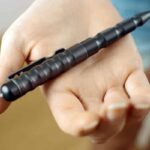The Marine Corps recently celebrated its 250th Birthday this year (in 2025), and in celebration of that milestone, I wanted to discuss the M27 Infantry Automatic Rifle (IAR). It’s a somewhat controversial system that I was originally a doubter of. How can you replace a belt-fed weapon with a magazine-fed rifle? It’s not like this hadn’t been attempted before.
The BAR (Browning Automatic Rifle) proved effective, but that was because there wasn’t anything smaller and lighter at the time. The Marine Corps experimented with the Stoner 63 in its automatic rifle format and found it unsatisfactory. For a short time after Vietnam, the Marines even implemented an M16A1 with a clamp-on bipod to provide support fire in a squad of M16A2s.
The M249 SAW (Squad Automatic Weapon) swept in and became the rifleman’s light machine gun. The Marine Corps still referred to M249 users as automatic riflemen and did not call them machine gunners. Marine machine gunners would still wield the M60 or M240, depending on the time frame, as well as the heavier M2 and Mk 19.
Advertisement — Continue Reading Below
The M27 IAR is a variant of HK’s (Heckler & Koch) HK416 rifle. It’s a short-stroke gas piston rifle. The M27 IAR is fed from 30-round STANAG magazines and fires from a closed bolt design. The gun’s short-stroke gas piston design is better suited for extended automatic fire than an M16 or M4’s Direct Impingement (DI) design.
It runs cooler and cleaner, both critical when you are putting a lot of ammo downrange. The rifle has a 16.5-inch barrel that put it right between the M4 and M16A4 in terms of length. The rifle weighs 7.9 pounds empty, but when equipped with the Marine Corps loadout, it gets up to 13 pounds.
Advertisement — Continue Reading Below
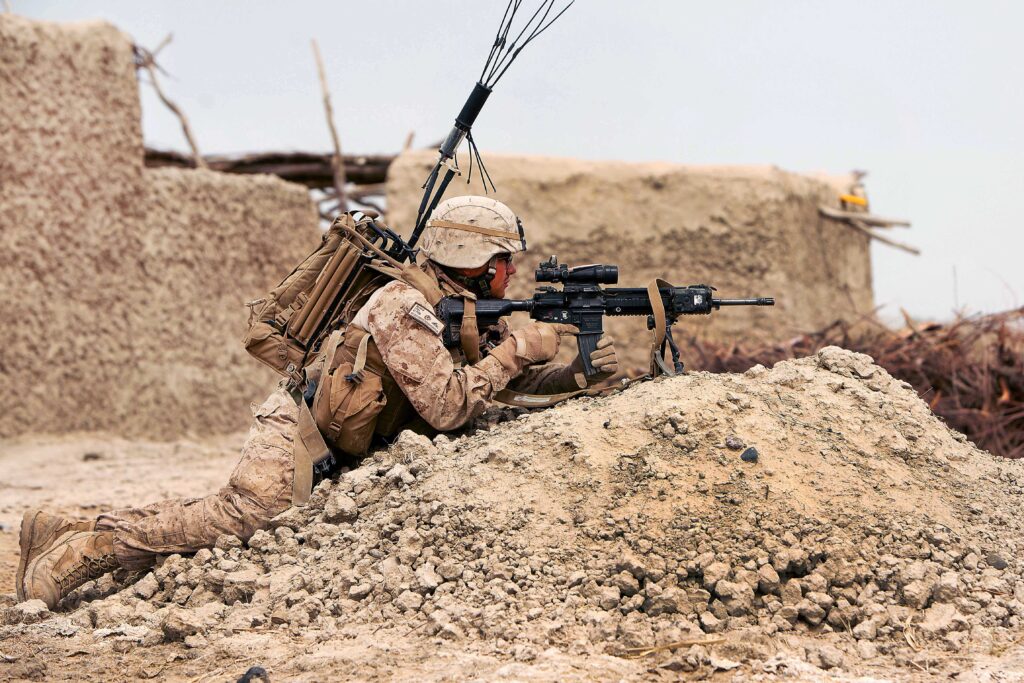
The current loadout, which includes a 30-round magazine, Blue Force Gear sling, Trijicon 1-8X VCOG (Variable Combat Optical Gunsight), Knight’s suppressor, and PEQ-16 (laser/light module), brings the weight up to around 13 pounds. An M249 with a 200-round drum, a Trijicon SDO (Squad Day Optic), and a PEQ-16 brings the weight to nearly 25 pounds, sans sling. The M27 IAR is hefty for a rifle, but lightweight for a squad support weapon.
My Little Machine Gun
Going to Afghanistan in 2009 was an interesting time. I was a machine gunner and deployed to Afghanistan with an M249 due to the newer, more stringent Rules of Engagement (ROEs) that were part of President Obama’s first term. It wasn’t until midway through the deployment, after countless firefights of being outgunned by PKMs (Russian-designed belt-fed machine guns), that we were finally allowed to carry M240s.
Advertisement — Continue Reading Below
At first, I recoiled at the thought of an M249. I wanted my heavy-duty, massive, reliable, beastly M240. However, after countless miles of foot patrols and a few firefights, I appreciated the M249. When we finally closed the distance after being overmatched by enemy forces, the M249 proved to be an effective platform.
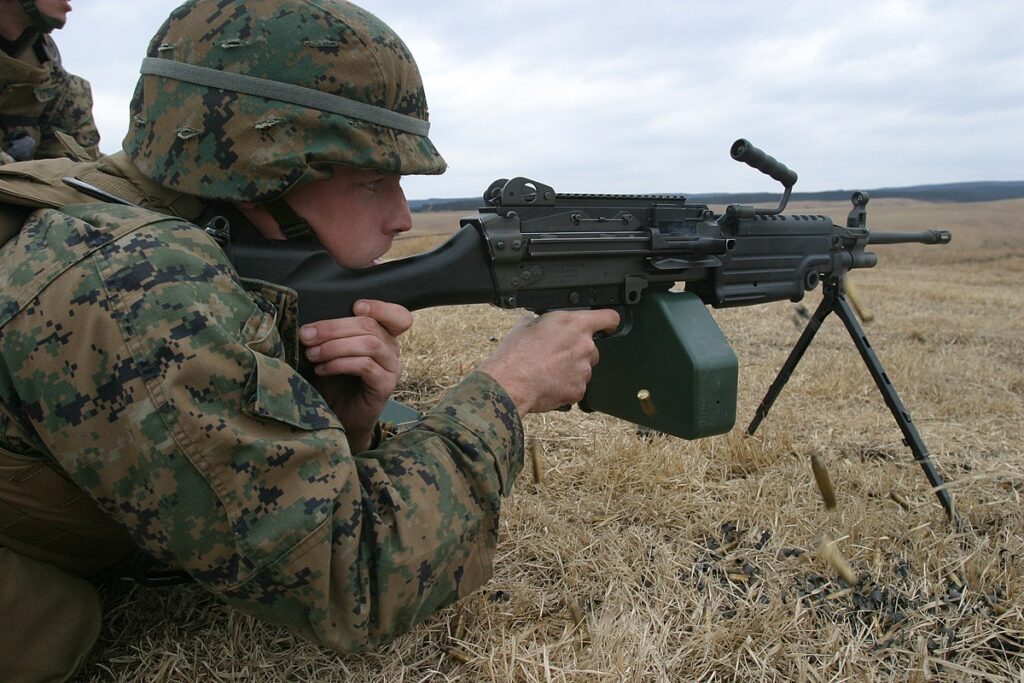
We were often miles from friendly forces, and any response would be on foot due to a lack of infrastructure. If we needed backup, it was a long way away. The M249 did allow me to carry 1,000 rounds of linked 5.56mm, and while initially I balked at the extra weight, in a firefight, it went quickly.
Advertisement — Continue Reading Below
I became an M249 convert. It didn’t replace my love of the M240 and its capabilities, but I appreciated the little brother a lot more. I was in the Marine Corps just as the M27 IAR began replacing SAWs, but not long enough to see its overall effects.
Most machine gunners and automatic riflemen weren’t too keen on the M27 IAR. They didn’t think it could effectively replace the SAW. In the wake of the M27’s adoption, someone said something that stuck with me, “Machine gunners are going to get a lot more valuable.” I wasn’t the only doubter; everyone doubted the system, including former Commandant James Conway.
The M27 IAR Hits Afghanistan
The Marine Corps sent a batch of M27s to Afghanistan, and the results were surprisingly positive. The M27 IAR proved to be lighter, easier to carry, and easier to maneuver with. The M27 was praised for its increased reliability and superior accuracy compared to the SAW. Marines realized they had two weapons in one.
Advertisement — Continue Reading Below
At longer ranges, they could place accurate shots at targets at expanded distances, and they could swap to full-automatic fire for the 200 to 300-yard rushes. The M27 proved even more accurate than the M4s and M16s thanks to the free-floating barrel. The Marine Corps leaned into a suppression doctrine of suppression by precision rather than suppression by volume of fire.
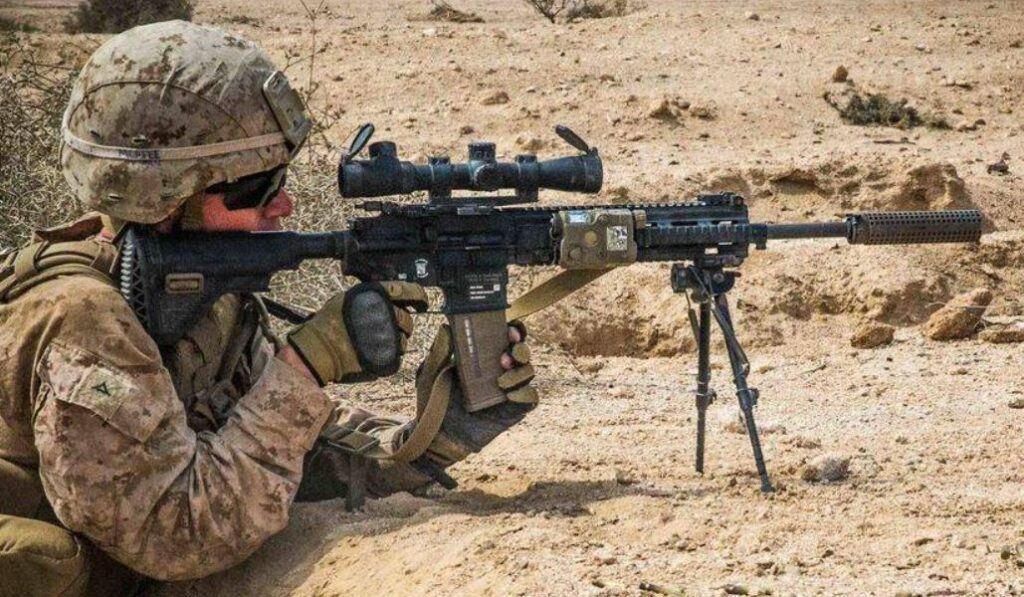
The idea is that one round hitting closer to the enemy has a better effect than three to four rounds fired from the SAW hitting further from the enemy. The effective precision of the platform also aided in preventing collateral damage due to its overall accuracy.
Advertisement — Continue Reading Below
The M27 proved so successful that the Marine Corps began issuing them en masse to Marine infantry and combat arms forces. It eventually replaced the M16A4 and the M4 among combat arms forces. Currently, the M27 is the Marine Corps’ general infantry combat rifle.
The Evolution of the M27 IAR
The original optic for the M27 IAR was a 3.5X variant of the Trijicon ACOG equipped with a piggybacked RMR (Ruggedized Miniature Reflex). The Marine Corps sought to take additional advantage of the M27’s accuracy and began fielding the VCOG, a 1-8X LPVO (Low Power Variable Optic). This helped increase the M27’s precision.
The Marine Corps would equip the M27 with a 2-10X Leupold scope and designate that variant the M38 Designated Marksman’s Rifle. The M27 was now an automatic rifle, a general issue infantry rifle, and a designated marksman’s rifle.
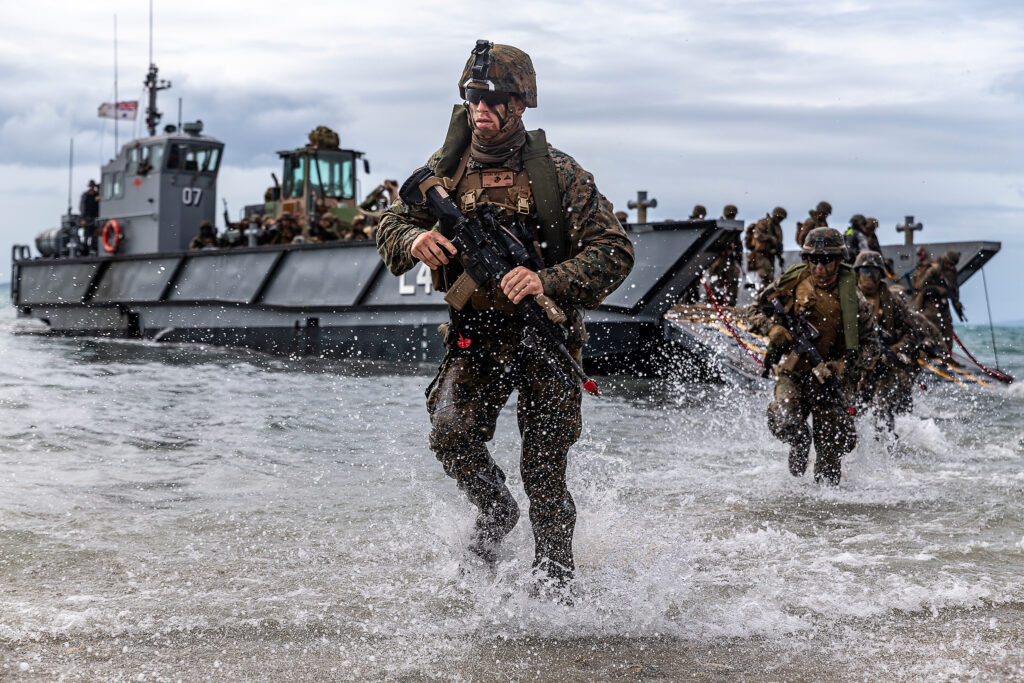
Compared to the M4, the M27 IAR is somewhat large and heavy. The Reconnaissance (Recon) community initially rejected the M27 for the M4, but the Marine Corps went on to adopt the Recon Weapons Kit, a shorter upper receiver that features an 11-inch barrel.
The Future of the M27 IAR
The Marine Corps expressed the possibility of adopting the Army’s NGSW (Next Generation Squad Weapon) after Army testing, but it’s unclear how far that will go. There is no firm yes or no with the NGSW M7. The Marine Corps certainly seems happy with the M27 IAR, and so does the average grunt. It’s likely the M27 will stay in the Marine Corps armories for the near future.
Read the full article here






